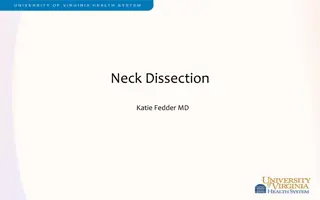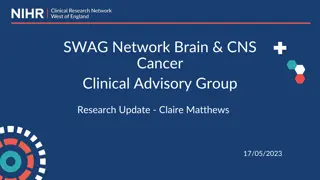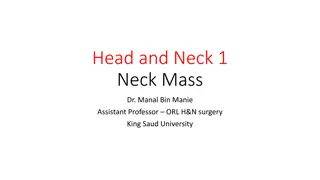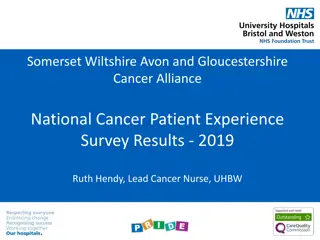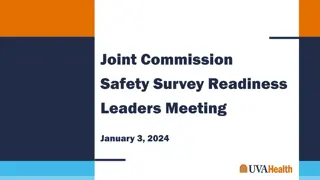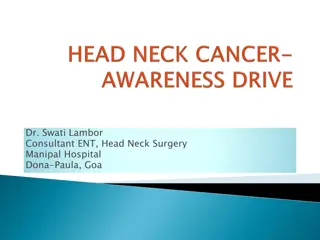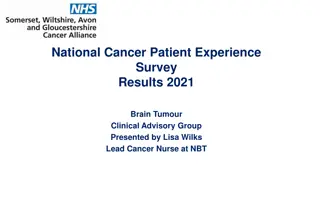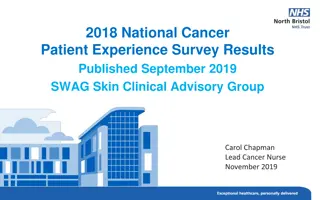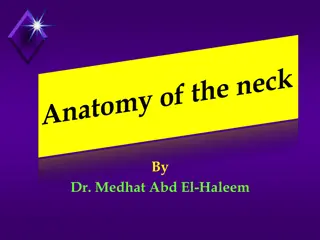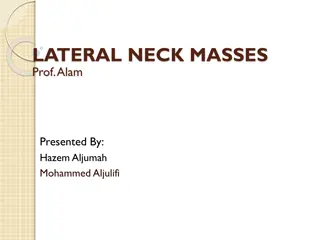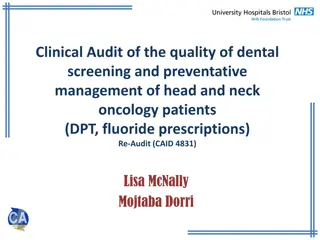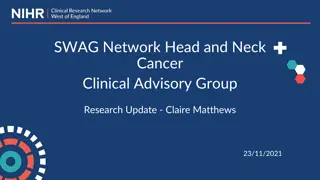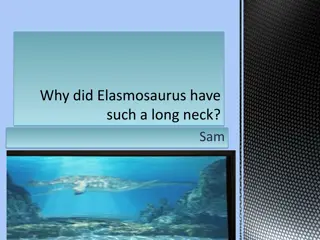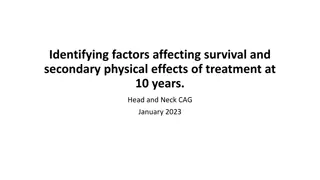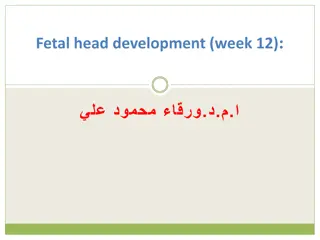Key Findings from 2019 National Cancer Patient Experience Survey on Head and Neck Cancer
The 2019 National Cancer Patient Experience Survey focused on inpatients and day-case adults with a cancer diagnosis, particularly in the field of head and neck cancer. The survey gathered responses from various trusts, highlighting both high and low scores in patient care and support. Noteworthy findings include satisfaction with information provided by healthcare staff, areas for improvement in discussing treatment options and support services, and variations in responses across different healthcare facilities.
Download Presentation

Please find below an Image/Link to download the presentation.
The content on the website is provided AS IS for your information and personal use only. It may not be sold, licensed, or shared on other websites without obtaining consent from the author.If you encounter any issues during the download, it is possible that the publisher has removed the file from their server.
You are allowed to download the files provided on this website for personal or commercial use, subject to the condition that they are used lawfully. All files are the property of their respective owners.
The content on the website is provided AS IS for your information and personal use only. It may not be sold, licensed, or shared on other websites without obtaining consent from the author.
E N D
Presentation Transcript
2019 National Cancer Patient Experience Survey Head and Neck Cancer
NCPES 2019 Inpatients and day-case adults with cancer diagnosis, discharged from hospital 01/04/19 30/06/19 Sent postal questionnaires and online option Dec 19 March 20 National response rate: 61% SWAG response rate (all cancers): 66% 120 Head and Neck responses across SWAG
Head and Neck responses 2019 Trust responses Response rate No. of H&N responses UHBristol 830 61% 54 North Bristol 956 63% 1 Weston 184 72% 0 Taunton 983 66% 27 Yeovil 277 69% 1 Bath 729 66% 13 Glos / Chelt 486 69% 19 Salisbury 485 69% 1 Total: 116 (120)
Highest scores: for SWAG H&N SWAG % National H&N average 44 Cancer doctor had the right documents at last appointment 98 96 41 Hospital staff told patient who to contact if worried about condition / treatment after leaving hospital 97 93 27 Beforehand, patient had all the information needed about the operation 97 96 22 Hospital staff gave information about support /or self-help groups for people with cancer 96 88 6 The length of time waiting for the test to be done was about right 96 88 5 Received all information needed about test 95 93 54 GP given enough information about patient s condition and treatment 95 94 58 Overall administration of care was good or very good 95 90 19 Patient given the name of CNS who would support them 94 91
Lowest scores: for SWAG H&N SWAG % National H&N average 60 Someone discussed with the patient whether they would like to take part in cancer research 29 21 57 Patient given a care plan 42 39 37 Patient definitely found hospital staff to discuss worries and fears during inpatient visit 59 52 50 Patient given enough information about whether chemotherapy was working in a completely understandable way 59 57 17 Patient definitely told about side effects that could affect them in the future 60 64 55 General practice staff definitely did everything to support patient during treatment 61 59 52 Patient definitely given enough support from health or social services during treatment 62 59 53 Patient definitely given enough support from health or social services after treatment 63 56 47 Patient completely given understandable information about whether radiotherapy was working 63 63
Suggested actions: Share good practice Clinical Trials / cancer research (language / access) Capturing holistic conversations / HNAs and care plans / COSD Inpatient support for worries and fears Information about future side effects and whether radiotherapy / chemotherapy is working Links with Health & social services / Primary care for support, during and after treatment
Future NCPES No comparable 2020 NCPES currently looking at option for a national COVID cancer patient experience survey Whole survey (methodology / sampling / design / reporting) being reviewed ahead of 2021 iteration. Please feed in suggestions.


